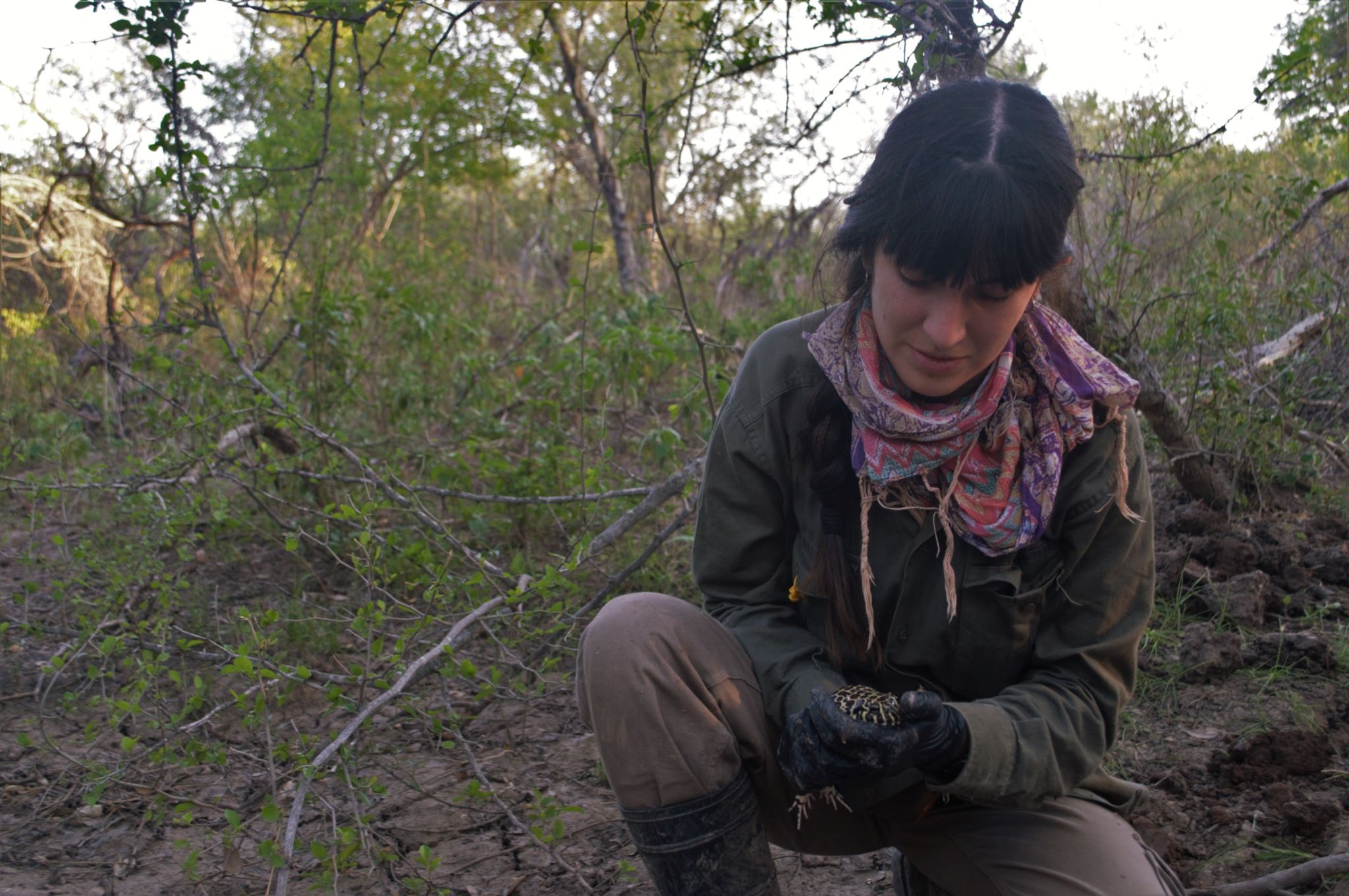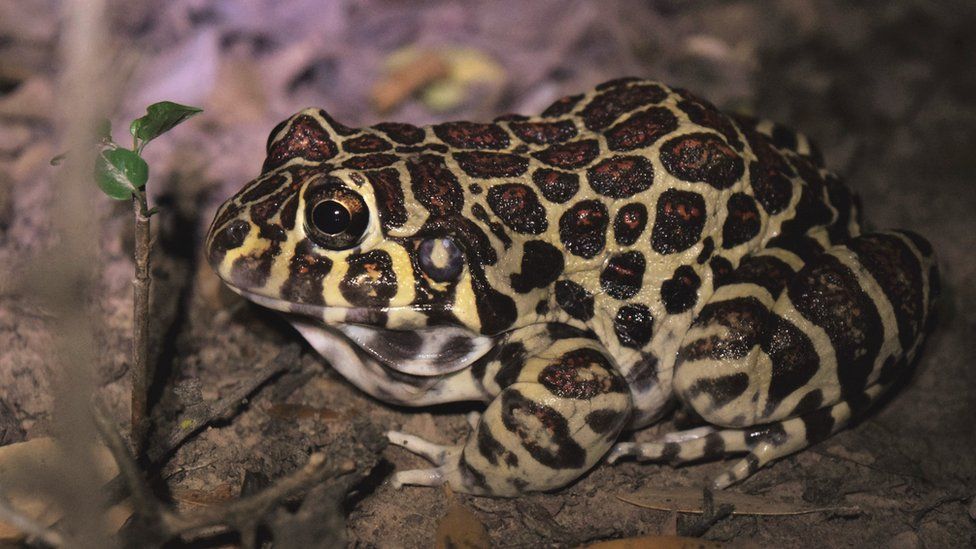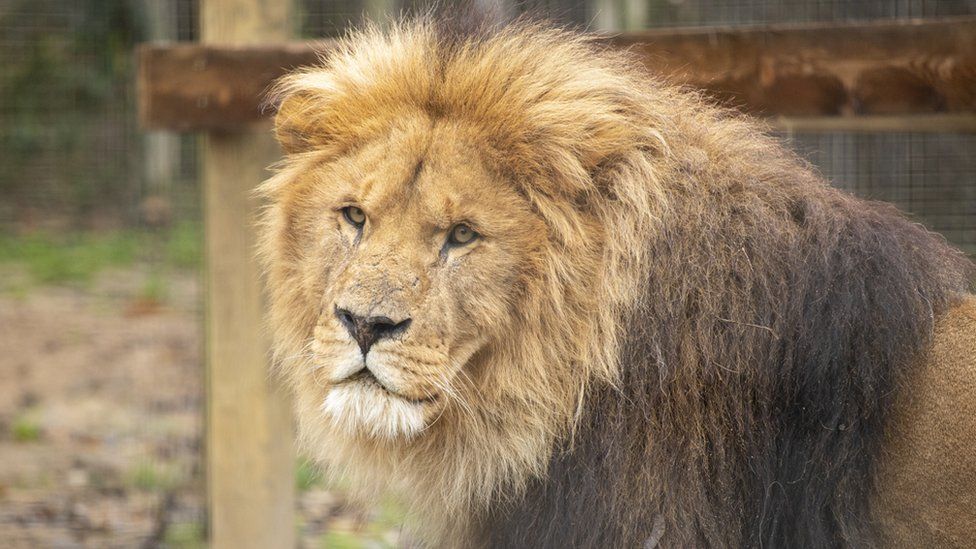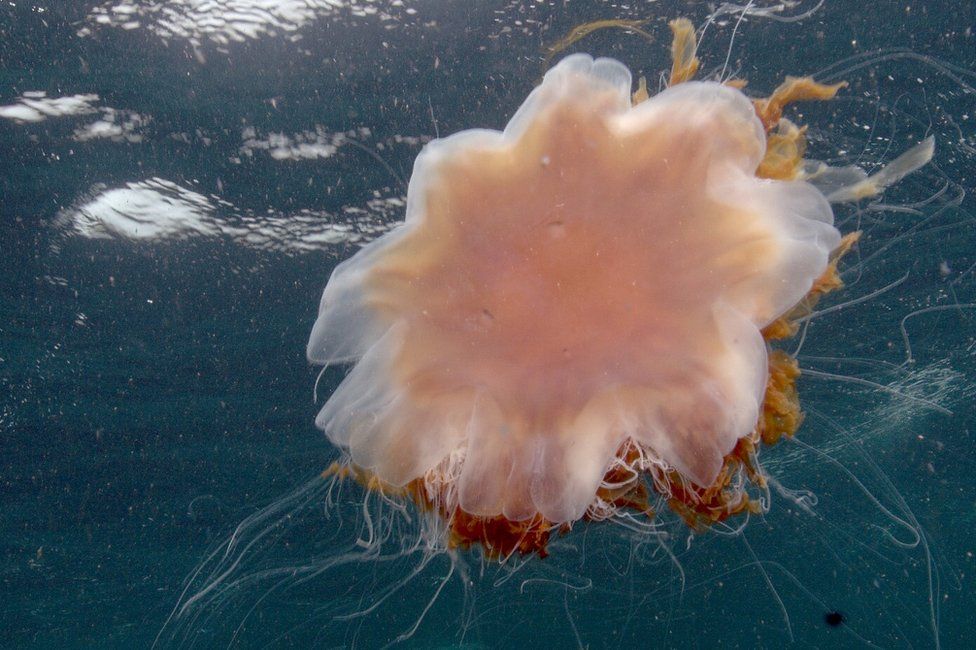An all-female team endured 50°C heat and venomous snakes in order to locate and study a "leopard-print" frog that is essentially unknown to science.
The Dry Chaco, one of the world's driest forests, is the habitat of the tiny Santa Fe frog, whose survival is being threatened by Argentinian conservation scientists.
They learned that it hides in caves and only emerges to call for a mate.
They also discovered the species' tadpoles for the first time.
The Santa Fe frog project is headed by Isis Ibaez, who is based in Buenos Aires. "It's not been an easy journey so far, but we're determined to do what we can to secure the future for this wonderful amphibian," she said.

The frog of Santa Fe (. Leticeps leptodactylus. ), despite being discovered more than a century ago, is largely unknown to science.
The only frog found in Argentina, Bolivia, and Paraguay is now rare because the tropical dry forests where it once lived have been destroyed.
To find and observe the brightly colored frogs, the researchers set up camera traps.
This species of frog lives underground instead of calling loudly from a pond, stream, or swamp to attract a mate.
The team discovered the males hopped back down their burrows with interested females after emerging at dusk to announce their presence.

They finally discovered the first signs of eggs and tadpoles after digging all night long.
The first step in frog protection in the wild is to examine its breeding habits.
The conservation scientists hope to highlight the biodiversity of the Dry (or Grand) Chaco and other animals that are threatened with extinction by bringing attention to the plight of the frog.
Team member Camila Deutsch said, "This species is a clear example of why we have to defend the forest in the Dry Chaco.". "Our time is limited. ".
To learn more about the frog and improve its protection, the scientists are also communicating with local community leaders, hunters, and farmers.

A vast area of forested and arid plains known as the Grand Chaco crosses parts of Bolivia, Argentina, and Paraguay.
Over the past few decades, the Chaco woodlands have been gradually cleared to make room for ranches and agricultural land.
Although it receives less attention than its Amazon neighbor, the forest has one of the highest rates of deforestation on the planet.
Due to its isolation and sweltering temperatures, the region has been referred to as "El Impenetrable" and even "hell on Earth.". There is very little rain and daytime highs of 50C are not uncommon.
Nevertheless, a wide variety of animals, including hundreds of different birds, mammals, reptiles, and amphibians, thrive in the harsh environment.
Gabriela Agostini remarked, "It's a dry forest with an incredible biodiversity.

Amphibians are in grave danger of going extinct. Over the past 40 years, a pathogenic fungus has been decimating populations all over the world.
Hunting and habitat loss are two other factors putting pressure on the animals.
The Wildlife Conservation Society, BirdLife International, and Fauna and Flora are working together to support the Santa Fe frog project through the Conservation Leadership Programme (CLP).
On Twitter, follow Helen at @hbriggs.








